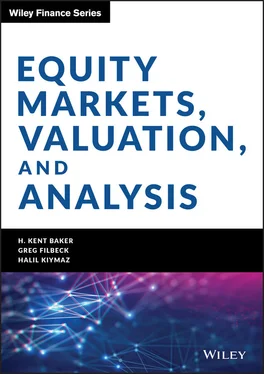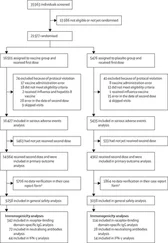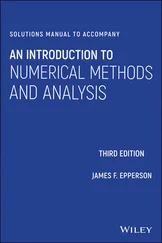GOOD MARKETS – EFFICIENCY
One characteristic of a good market is market efficiency , which is an important component of a capitalist system. For efficient capital markets to function smoothly in allocating financial resources, the prices of company stocks must be reasonable, if not perfect, indicators of firm value.
The root market efficiency question hinges on both the type and amount of information available. Specifically, the type of information defines the three forms of the hypothesis: weak, semi-strong, and strong. Studies identify various anomalies in efficient markets.
Weak form efficiency occurs if stock prices currently reflect all known market information, including stock prices and volume. In this market, stock prices adjust rapidly to existing market information. These adjustments occur so quickly that investors cannot expect to consistently make abnormally large returns based on new market information as it becomes known. For example, Kendall (1953) finds that stock prices do not show any predictable patterns. In other words, whether the stock prices go up or down on the previous day does not predict the stock price movement today.
Semi-Strong Form Efficiency
Semi-strong form efficiency occurs if stock prices currently reflect all known public information, including all market information. In a semi-strong form efficient market, stock prices also adjust rapidly to new public information. As with weak form efficiency, these adjustments occur so rapidly that investors cannot consistently earn abnormally large returns based on any new public information (Patell and Wolfson 1984). Two types of studies – event studies and mutual fund performance studies, show that markets are generally efficient in the semi-strong form. For example, Busse and Green (2002) use an event test to study the minute-by-minute stock prices of companies that are discussed on CNBC's segments. They show that stock prices move rapidly to new levels, depending on whether the reports they receive are positive or negative. Pastor and Stambaugh (2002b) find that mutual fund managers do not outperform their fund's benchmarks. These studies indicate that using public information in stock selections is unlikely to consistently lead to profits because stock prices have already incorporated this information.
Strong form efficiency occurs if stock prices currently reflect all known information, including all public and private information. The additional information included at this level is private or inside information. If a market is strong form efficient, investors cannot expect to consistently make abnormally large returns based on any information, including private information. Another issue that exists with using private or inside information is that using inside information violates securities trading rules in the United States and other countries.
Studies and Implications Regarding Market Efficiency
Numerous studies show that markets with many profit-maximizing investors appear to be both weak form and semi-strong form efficient. Studies examining strong form efficiency generally indicate that these same marketplaces are not strong form efficient (Givoly and Palmon 1985; Jaffe 1974), even with prohibitive securities regulations. The fact that these markets are weak and semi-strong form efficient does not prohibit an investor from earning an acceptable return. Instead, the hypothesis merely clarifies that in an efficient market, investors cannot consistently earn abnormal returns as new market and/or other public information becomes available (Seyhun 1986).
Testing strong form efficiency presents various challenges. First, studying the efficiency of strong form markets requires using private data. Second, because the information is privately held, no competitive trading can take place on the information. Third, because the information is private and cannot be used competitively, government regulation is required to prevent insider trading on private information from occurring. Therefore, the markets cannot be strong form efficient in an otherwise efficient market such as that in the United States.
On average, in an efficient market, the returns earned should be commensurate with the level of risk taken. Over the long term, this risk–return tradeoff is critical to investors since, in an efficient market, shareholders should have the opportunity to receive a fair return relative to the risk they undertake. Without efficient markets, some investors could be consistent winners, but a larger portion of the investors, especially retail traders, are doomed to incur losses.
Good Markets – Trust and Confidence
Besides liquidity and market efficiency, another important requirement for a good market is investor trust and confidence. Others may overlook this issue, but not the U.S. Securities and Exchange Commission (SEC).
To illustrate the importance of investor confidence and trust, remember the old adage: fool me once, shame on you; fool me twice, shame on me. As related to market trading, investors are unlikely to trust people or organizations that trick them. Being tricked in the capital market means losing money. A lack of trust in the market and its integrity leads to fewer investors and less market efficiency and liquidity. However, Diamond (1989) notes that building a good reputation and trust with investors takes a long time.
How can investor trust be earned and maintained? This task can be accomplished by providing adequate information disclosure. Ordinary investors do not have access to specific information about company operations, financing, and future plans. Instead, they must rely on information disclosure and announcements by those companies. To ensure fair disclosure of information, the SEC generally requires publicly traded companies to file updated information both annually and quarterly, and, when necessary, to provide timely announcements about important events. The SEC adopts new rules and regulations when necessary to improve the level and flow of information.
Besides information disclosure, enforcement, especially against insider trading, is another mechanism the SEC uses to preserve investor trust. In most insider trades, insiders have an informational advantage, and if they choose to exploit this advantage illegally, they can benefit at the cost of outside investors. The reason is simple – when an insider buys stock believing its price is about to increase, outside investors pay the price as the sellers of those shares. Similarly, when an insider sells knowing that stock price is likely to fall, outside investors are the ones who buy those shares.
By providing liquidity for these informed insider trades, outside investors are losers. Rational investors would never choose to trade against an insider exploiting an informational advantage. A market plagued with insider trades makes participating unappealing for ordinary investors simply due to the loss of money and, more importantly, confidence. The SEC continually enforces regulations to reduce illegal insider trading in the market, and its enforcement is effective in curbing insider trading with superior information.
In some extreme cases, the government may use monetary policies to restore the stock market and investor confidence. After the Great Recession from 2007 to early 2009, central banks worldwide conducted several rounds of quantitative easing (QE), which generally means buying government bonds to make bonds less attractive to investors and to enable firms to receive cheaper funds for future projects. Although these QE policies have their fair share of critics, they boosted the stock markets and helped restore investor confidence. Consequently, with the improved stock market, firms began to invest more. Traditionally, an increase in business investments is associated with hiring additional employees and, therefore, an accompanying improvement in the job market.
Читать дальше












